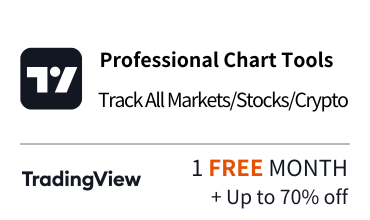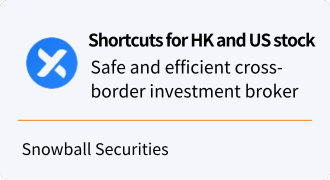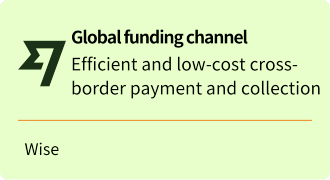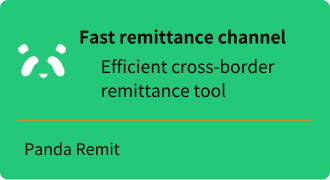Complete Guide to Trading Costs (Part 2): Practical Strategies from Broker Selection to Execution Optimization
[DISCLAIMER] This article is for educational and informational purposes only and does not constitute investment advice. Readers should consult with qualified financial professionals before making any investment decisions.
In Part 1, we explored the three major components of trading costs and their astonishing impact on long-term investment returns. If understanding trading costs is the first step, optimizing these costs is the critical path to investment success. In Part 2, we'll focus on practical implementation, from broker selection to specific execution strategies, providing you with actionable plans to optimize your trading costs.
Whether you're a beginner just starting your investment journey or an experienced trader looking to refine your approach, the following content will help you reassess and improve your investment process. Let's begin with the most fundamental and important decision—how to choose a broker platform that matches your trading style.
V. Broker Selection Guide: How to Match the Best Platform to Your Trading Style
Choosing a broker is like selecting a long-term partner—it not only affects your trading costs but also determines your trading experience, available tools, and market opportunities. Let's explore how to make this crucial decision to ensure your trading costs and investment returns achieve optimal balance.
Different brokers have significant variations in fee structures, services, and trading tools. Selecting a broker that suits your trading style can substantially reduce trading costs.
5.1 Broker Selection Decision Tree: Finding Your Ideal Platform
Use the following decision tree to quickly find the broker type that best suits your investment style:
First, consider your primary investment market
- Primarily investing in US stocks → Go to step 2
- Primarily investing in Hong Kong stocks → Go to step 3
- Investing in both US and Hong Kong stocks → Go to step 4
US Stock Investor Decision Points
- Large trades (>$50,000/trade) + Value research tools → Consider: Interactive Brokers, Snowball Securities
- Small frequent trades + Focus on user experience → Consider: Snowball Securities, Tiger Brokers, Firstrade, Futu Securities
- Long-term ETF/index fund holding → Consider: Snowball Securities, Firstrade, Charles Schwab, Vanguard
Hong Kong Stock Investor Decision Points
- Active trader + Focus on low costs → Consider: Interactive Brokers
- Large trades + Need advanced tools → Consider: Snowball Securities, Tiger Brokers, Longbridge Securities, Futu Securities
- Need local service and manual support → Consider: Local traditional brokers (Snowball Securities, Tiger Brokers, Longbridge Securities)
Cross-Market Investor Decision Points
- Frequent currency exchange → Prioritize brokers with low forex fees (e.g., Interactive Brokers)
- Need unified management → Look for multi-market integrated platforms (e.g., Interactive Brokers, Snowball Securities, Tiger Brokers)
- Focus on total cost → Consider using different brokers for different markets
Professional Tip: Don't be misled by a single rate—calculating your "Total Cost of Ownership" (TCO) is wise. For example, a broker with cheap commissions but high foreign exchange fees might have higher total costs for cross-market investors.
5.2 Comprehensive Broker Comparison Table
Below is a comparison of major brokers for US and Hong Kong stock investments (data as of 2025):
| Broker Name | US Stock Commission | HK Stock Commission | Margin Rate | Forex Fee |
|---|---|---|---|---|
| Interactive Brokers | $0.0035/share, min $0.99 | 0.08%, no minimum | 5.83%-4.83% | Low |
| Snowball Securities | $0.0035/share, min $0.99 | 0.03%, min HK$18 | 7.83%-6.83% | Slightly low |
| Futu Securities | $0.0099/share, min $0.99 | 0.03%, min HK$18 | 6.80%-4.8% | Medium |
| Tiger Brokers | $0.0079/share, min $0.79 | 0.029%, min HK$15 | 7.33%-6.33% | Medium |
| Firstrade | $0 (zero commission) | Does not offer HK stocks | 8.33% | Not available |
| Charles Schwab | $0 (zero commission) | Does not offer HK stocks | 9.00%-11.75% | High |
| Longbridge Securities | $0.0099/share, min $0.99 | 0.03%, min HK$18 | 5.75% | Medium |
5.3 Broker Recommendations for Different Investment Styles
Long-term Value Investors
Priority factors: Overall fee structure, research resources, investment tool diversity
Recommended brokers: Interactive Brokers, Snowball Securities, Tiger Brokers
Rationale: While trading commissions might not be the lowest, comprehensive research tools and lower margin rates are more important for long-term investors.
Regular Dollar-Cost Averaging Investors
Priority factors: Fixed fees, automation features, fund transfer convenience
Recommended brokers: Interactive Brokers, Snowball Securities, Tiger Brokers
Rationale: Low to zero minimum commissions and convenient regular investment setup features support small, regular (monthly) investments.
Active Traders
Priority factors: Trade execution speed, commission levels, trading tool flexibility
Recommended brokers: Interactive Brokers (large amounts), Snowball Securities/Tiger Brokers (small to medium amounts)
Rationale: Efficient order execution and tiered commission structures for frequent trading offer more cost-effectiveness.
Multi-Market Traders
Priority factors: Market range support, currency exchange fees, unified account management
Recommended broker: Interactive Brokers
Rationale: Provides unified access to multiple global markets with relatively transparent and low foreign exchange conversion fees.
Practical Advice: Don't just look at advertised commissions; calculate total trading costs. For example, a broker advertising zero commissions but charging high foreign exchange fees could cost more for investors frequently reallocating funds between different markets. Ask customer service about hidden fees and request a complete fee breakdown.
What broker do you use? How satisfied are you with its service and fee structure? Share your real experience in the comments to help other investors make more informed choices!
VI. Seven Strategies to Optimize Trading Costs: Small Changes, Big Returns
Having understood various aspects of trading costs, let's look at specific strategies to reduce these costs and increase net investment returns.
Strategy 1: Control Trading Frequency Rationally
Frequent trading is the main source of trading cost accumulation. By scientifically controlling trading frequency, you can significantly reduce overall costs.
Specific Operations:
- Establish a clear trading plan and avoid impulsive trading
- Set a minimum expected return threshold; only trade when potential returns exceed this threshold
- Use calendar reminders to periodically review your portfolio rather than checking daily (reducing opportunities for trading impulses)
- Implement a "cooling period" rule: wait 24-48 hours after major market fluctuations before making decisions
Implementation Tools:
- Investment calendar template
- Trading decision process flowchart
Expected Effect: According to my observations, reducing trading frequency from 3 times weekly to 2 times monthly can decrease trading costs by approximately 70% on average, with minimal impact on long-term returns.
How to Start: Review your trading records from the past 3 months, mark those that ultimately proved unnecessary, calculate the costs they generated—this will help you establish trading discipline.
Strategy 2: Optimize Order Execution
Order execution methods directly impact your slippage costs, especially for large trades and volatile markets.
Specific Operations:
- Use limit orders instead of market orders, especially when trading stocks with lower liquidity
- Avoid trading during the 30 minutes before market opening and closing (these periods typically have greater volatility and higher slippage risk)
- Split large orders into multiple smaller orders to reduce market impact costs
- Consider using Market-on-Close (MOC) orders, especially for passive investors
Order Type Optimization Table:
| Trading Scenario | Recommended Order Type | Advantages | Considerations |
|---|---|---|---|
| Large trades | Limit order + batch execution | Controls execution price | May result in partial non-execution |
| High volatility periods | Stop-limit order | Balances protection and price control | Requires appropriate trigger and limit price settings |
| Long-term investors | Market-on-Close order (MOC) | Avoids intraday volatility effects | Cannot control specific price |
| Expecting specific price | Limit order + GTC | Trades at expected price | May not execute for extended periods |
Real Case: One of my clients successfully reduced average slippage from 0.3% to 0.1% by splitting a large order (100,000 shares) into five executions of 20,000 shares each, saving approximately $4,000 on a $2 million transaction.
Key Technique: For large trades, consider using VWAP (Volume-Weighted Average Price) or TWAP (Time-Weighted Average Price) algorithmic orders, as these professional tools can significantly reduce market impact costs.
Strategy 3: Leverage Tiered Commission Structures
Many brokers offer tiered commission structures based on trading volume. Understanding and utilizing this mechanism can optimize trading costs.
Specific Operations:
- Understand if your broker offers volume-based tiered commissions
- If available, consider concentrating small frequent trades within a certain period to reach higher trading volume tiers
- Calculate the cost-benefit of different trading sizes to find the optimal trading volume
Tiered Commission Optimization Example:
| Monthly Trading Volume | Standard Commission Rate | Actual Cost for 100,000 Shares | Optimization Suggestion |
|---|---|---|---|
| <300,000 shares | $0.0035/share | $350 | Concentrate trading to reach next tier |
| 300,000-3,000,000 shares | $0.0020/share | $200 | 42.8% savings potential |
| 3,000,000-20,000,000 shares | $0.0015/share | $150 | 57% savings potential |
| 20,000,000-100,000,000 shares | $0.0010/share | $100 | 71% savings potential |
| >100,000,000 shares | $0.0005/share | $50 | Optimal rate, 85.7% savings |
Supporting Data: Using Interactive Brokers as an example, increasing monthly trading volume above 300,000 shares can reduce commissions from $0.0035/share to $0.0020/share, saving 42.8% in commission expenses.
Implementation Tip: If your trading volume is close to a preferential tier but hasn't reached it, consider moderately increasing trading volume or advancing some of next month's trades to obtain more favorable rates. This strategy is particularly suitable for institutional investors and individuals with large trading volumes.
Strategy 4: Optimize Cash Management
Effective investment cash management can reduce unnecessary currency conversions and financing costs, improving overall returns.
Specific Operations:
- Reduce unnecessary currency conversions by using multi-currency accounts
- Make large currency conversions when exchange rates are favorable rather than frequent small conversions
- Consider using cash enhancement services offered by brokers (such as money market funds) to avoid idle funds losing value
- Use financing cautiously, ensuring potential returns significantly exceed financing costs
Cash Management Best Practices Table:
| Fund Type | Management Strategy | Costs Avoided | Tool Recommendations |
|---|---|---|---|
| Idle cash | Money market funds | Inflation erosion | IBKR interest on cash balances, Snowball Securities money market funds |
| Trading funds | Reasonable buffer reserves | Frequent currency conversion costs | Multi-currency accounts |
| Large conversions | Timing + price comparison | Unfavorable rates + high fees | Wise, OFX, or interbank competitive pricing |
| Financing usage | Only for high-certainty opportunities | Unnecessary interest expenses | Broker margin calculators |
Practical Application: I transfer annual investment funds once and invest in batches, with excess amounts invested in high-interest money market funds, redeeming when needed.
Strategy 5: Tax Planning and Optimization
Tax optimization is an important component of reducing total investment costs, especially for cross-border investors.
Specific Operations:
- Understand tax rules in different markets and utilize tax treaties (such as the China-US tax treaty)
- Consider using tax-efficient account types (such as US IRA accounts)
- Strategically time the realization of gains and losses to optimize tax burden
- Maintain complete trading records to ensure you can claim all legitimate tax deductions
Key Tax Optimization Points:
| Investment Market | Tax Optimization Strategy | Potential Tax Savings | Required Documents |
|---|---|---|---|
| US Stocks | Submit W-8BEN to reduce dividend tax | 30%→10% dividend tax | W-8BEN form |
| Hong Kong Stocks | Strategically plan trading times to avoid short-term stamp duty accumulation | Reduce 0.13% × number of trades | Complete trading records |
| A-Shares | Consider Shanghai-Hong Kong/Shenzhen-Hong Kong Stock Connect differential tax burdens | Optimize based on specific situations | Trading records for different markets |
Potential Benefits: Effective tax planning can reduce investment tax burden by 2%-5%, significantly impacting long-term compound returns.
Professional Tip: Consider consulting a professional tax advisor, especially when making large cross-border investments. The right tax strategy can save you substantial funds, far exceeding consultation fees.
Strategy 6: Technology and Tool Applications
Modern technology tools can significantly improve trading execution efficiency and reduce trading costs.
Specific Operations:
- Use cost calculators to evaluate trading costs in advance
- Utilize broker APIs to automate trading and reduce human error
- Consider using algorithmic trading tools (such as VWAP, TWAP) to optimize large order execution
- Regularly analyze trading records to identify cost optimization opportunities
Recommended Tool List:
| Tool Type | Recommended Choice | Main Functions | Suitable Users |
|---|---|---|---|
| Cost calculator | TradeLog | Comprehensive trading cost analysis | Active traders |
| Automated trading | IBKR API, TradeStation | Programmatic order execution | Quantitative traders |
| Trading analysis | TradingView | Identify cost-efficient, high-efficiency patterns | All investors |
| Portfolio tracking | Portfolio Visualizer | Overall performance and cost analysis | Asset allocation investors |
Case Sharing: By using VWAP algorithms to execute large orders, I reduced average execution slippage from 0.4% to 0.15% in trading, saving approximately 1.5% in invisible costs annually.
Technology Application Introduction: Even if you're not a technical expert, you can use Excel or Google Sheets to create a simple trading cost tracking system. The key is to continuously record and analyze your trading cost data to identify optimization opportunities.
VII. Trading Cost Management: Progression Path from Novice to Expert
Based on your investment experience level, I offer the following phased trading cost management recommendations:
7.1. Novice Stage (0-1 Year Investment Experience)
Focus Areas:
- Understanding basic trading cost components
- Avoiding excessive trading
- Selecting low-cost investment tools suitable for beginners
Specific Action Steps:
- Choose user-friendly brokers with transparent fees (Recommended: Snowball Securities, Tiger Brokers)
- Start investing using simple dollar-cost averaging strategies, controlling trading frequency
- Prioritize low-cost ETFs as primary investment vehicles
- Establish a simple trading journal, recording costs for each trade
- Set minimum holding periods (e.g., 3 months) to avoid frequent market entry and exit
7.2. Intermediate Stage (1-3 Years Investment Experience)
Focus Areas:
- Optimizing trade execution
- Systematically analyzing trading costs
- Beginning to compare different brokers and account types
Specific Action Steps:
- Create a trading cost spreadsheet, regularly analyzing the proportion of each cost category
- Experiment with different order types (limit orders, market-on-close orders, etc.)
- Calculate your "trading cost break-even point" and adjust your strategy accordingly
- Compare the overall cost structures of 2-3 different brokers
- Start paying attention to slippage and market impact costs, optimizing large trades
Intermediate Cost Optimization Resources:
- Trading cost analysis template
- Comprehensive broker trading cost comparison: from commissions to margin rates
7.3. Expert Stage (3+ Years Investment Experience)
Focus Areas:
- Comprehensively optimizing the trading cost ecosystem
- Refining trade execution strategies
- Coordinating tax planning and cross-market cost optimization
Specific Action Steps:
- Consider using professional trading tools and APIs to automate trading
- Negotiate custom commission rates (applicable for large traders)
- Develop a complete trading cost budget linked to investment return goals
- Explore advanced order types (algorithmic orders, basket trades, etc.)
- Combine tax planning and account structure to optimize overall investment efficiency
Advanced Strategy Tools:
- Using algorithmic trading
- Cross-market tax optimization strategies
Regardless of your stage, the key is to view trading costs as a core component of your investment strategy rather than an afterthought.
What stage are you at currently? What's your biggest trading cost challenge? Share in the comments, and I and other community members will help you find solutions.
VIII. Case Studies: Trading Cost Comparison of Three Investors
To specifically illustrate cost differences under different trading strategies, I analyzed the real performance of three investors under identical market conditions:
8.1. Case One: Mr. Zhang - Long-term Value Investor
Investment Style: Buy and hold quality companies long-term, rarely trading
Annual Trading Frequency: 2-3 times
Investment Tools: Primarily large-cap blue-chip stocks and ETFs
Broker Choice: Interactive Brokers (professional account)
Annualized Trading Cost Breakdown:
- Commissions: Approximately 0.05% (very infrequent trading)
- Slippage: Approximately 0.1% (large but infrequent trades)
- Foreign Exchange Costs: Approximately 0.1% (only 1-2 currency conversions per year)
- Total: Approximately 0.25% annualized cost
5-Year Investment Result:
Initial investment of $100,000, market average annual return of 10%, actual annualized return after costs of 9.75%, assets grew to approximately $159,000 after 5 years.
8.2. Case Two: Ms. Li - Regular Rebalancing Investor
Investment Style: Periodically adjusting portfolio based on asset allocation models
Annual Trading Frequency: 12-16 times (major rebalancing once per quarter)
Investment Tools: Various index ETFs, sector ETFs
Broker Choice: Tiger Brokers
Annualized Trading Cost Breakdown:
- Commissions: Approximately 0.3%
- Slippage: Approximately 0.2%
- Foreign Exchange Costs: Approximately 0.2%
- Total: Approximately 0.7% annualized cost
5-Year Investment Result:
Initial investment of $100,000, market average annual return of 10%, actual annualized return after costs of 9.3%, assets grew to approximately $156,000 after 5 years (about $3,000 less than Mr. Zhang).
Case Three: Mr. Wang - Active Trader
Investment Style: Technical analysis trading, frequent market entry and exit
Annual Trading Frequency: 150-200 times
Investment Tools: Individual stocks, options, leveraged ETFs
Broker Choice: Futu Securities
Annualized Trading Cost Breakdown:
- Commissions: Approximately 1.2%
- Slippage: Approximately 1.5%
- Foreign Exchange Costs: Approximately 0.3%
- Financing Costs: Approximately 1.0% (partial use of margin)
- Total: Approximately 4.0% annualized cost
5-Year Investment Result:
Initial investment of $100,000, despite his trading strategy theoretically capable of generating 12% annualized returns (above market average), after deducting 4% in trading costs, actual annualized return was only 8%, assets grew to approximately $147,000 after 5 years (about $12,000 less than Mr. Zhang, about $9,000 less than Ms. Li).
Key Insight: Although Mr. Wang's trading strategy theoretically outperformed the market average, high trading costs offset this advantage. This demonstrates that a trading strategy's success depends not only on its theoretical return rate but also on actual execution costs. For most individual investors, low-cost long-term investing often delivers better actual results.
Self-Identification: Which investor's style and trading frequency most closely matches yours? Consider calculating your own annualized trading costs and evaluating their impact on your actual returns.
IX. Setting Up Your Own Trading Cost Budget
As a conclusion, I strongly recommend that every investor establish a personal trading cost budget and treat it as a core component of their investment strategy.
9.1. Steps to Create a Personal Trading Cost Budget
Analyze Past Trading Records
- Calculate all trading costs over the past 6-12 months
- Break down costs by category (commissions, slippage, taxes, etc.)
- Calculate costs as a percentage of total investment amount
Set Target Cost Ratios
- Based on your investment style, set annualized trading cost targets
- Long-term investors: 0.3%-0.7%
- Medium-frequency investors: 0.7%-1.5%
- Active investors: Should strive to control under 2%
Develop Cost Control Strategies
- Set specific optimization measures for each cost category
- Identify trading behaviors that need to change
- Consider possible broker or account type changes
Establish Monitoring Systems
- Use spreadsheets or professional tools to track costs for each trade
- Set monthly or quarterly review times
- Establish cost overage alert mechanisms
Regular Evaluation and Adjustment
- Compare actual costs against budget targets quarterly
- Analyze cost-benefit, ensuring cost expenditures create value
- Adjust budgets based on market changes and personal needs
Cost Budget Self-Assessment Questions:
- Do you know your annualized trading cost rate?
- Does your trading strategy generate sufficient excess returns to offset trading costs?
- Do you have clear cost control mechanisms?
IX. Conclusion: Value Trading Costs, Let Time Become Your Friend
Trading costs are like invisible leaks on your investment journey—they may seem insignificant, but over time, they profoundly impact your wealth accumulation. By understanding, analyzing, and optimizing these costs, you can significantly improve long-term investment returns.
Reviewing the core concepts of this article:
- Trading costs (fees, commissions, and slippage) have an astonishing erosive effect on long-term compounding
- Different trading styles face different levels of cost pressure, with frequent traders especially needing to be vigilant about high costs
- Choosing a broker suitable for your trading style can substantially reduce overall trading costs
- Optimizing trade execution strategies and rationally controlling trading frequency are key methods for reducing costs
- Trading cost management should be viewed as a core component of investment strategy rather than an afterthought
I recommend readers start today by:
- Analyzing all your trading costs from the past 3-6 months to understand your actual cost rate
- Comparing fee structures of 2-3 different brokers to assess whether changes are needed
- Establishing a simple trading cost tracking spreadsheet to cultivate cost awareness
- Setting reasonable trading frequency limits based on your investment style
- Considering whether more advanced order types are necessary to reduce slippage costs
Investment master Warren Buffett once said: "Time is the friend of the wonderful business, but the enemy of investment returns is cost." Through scientific management of trading costs, you can make time the true friend of wealth growth.
In my next article, I'll explore how to set realistic investment goals and analyze the balance between risk, return, and expectations. Setting reasonable goals can help avoid excessive trading, thereby reducing unnecessary costs.
Do you have any unique tips for reducing trading costs? Or questions about cost management? Feel free to share in the comments—I'll select popular questions to answer in future articles!







